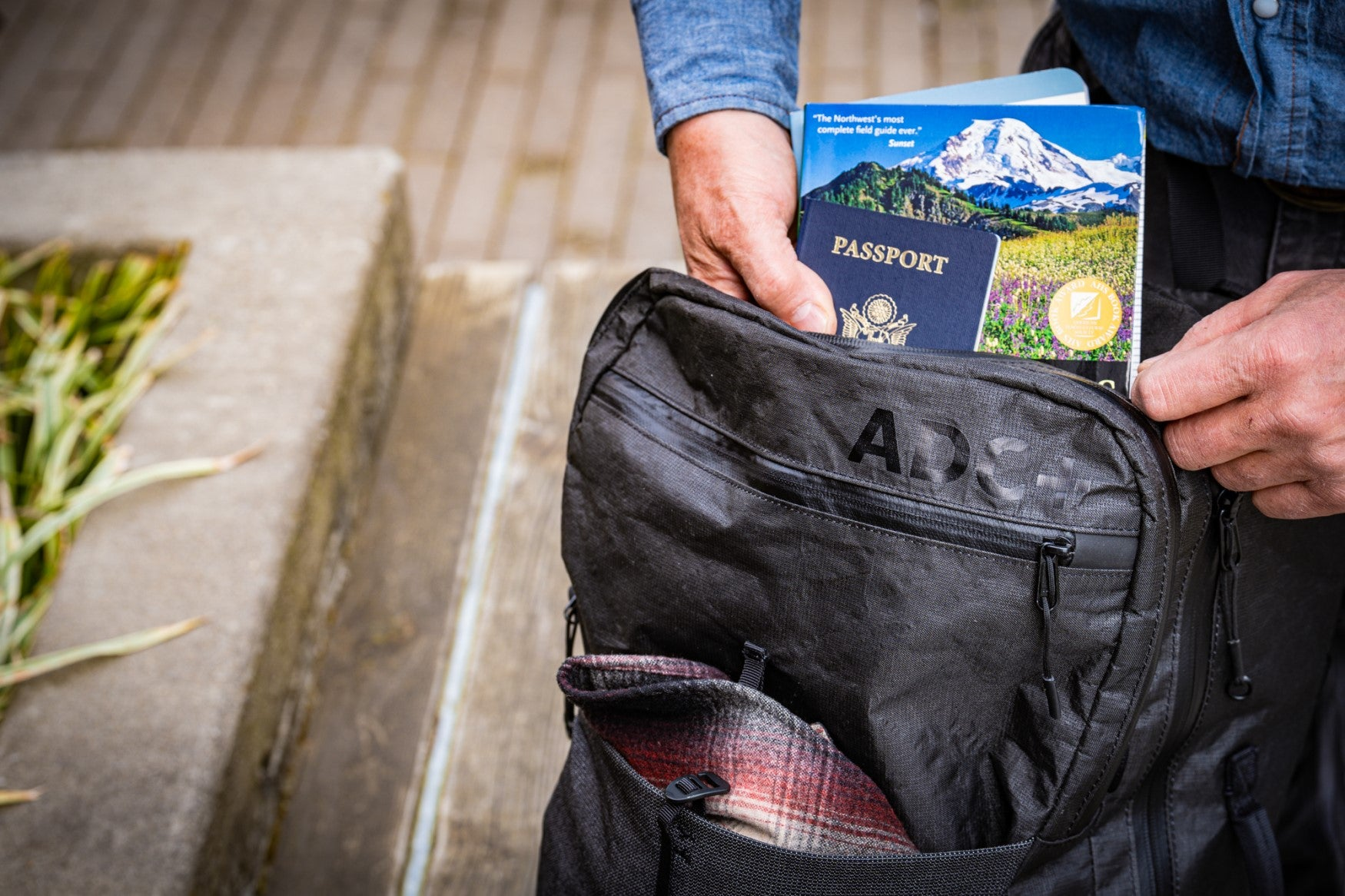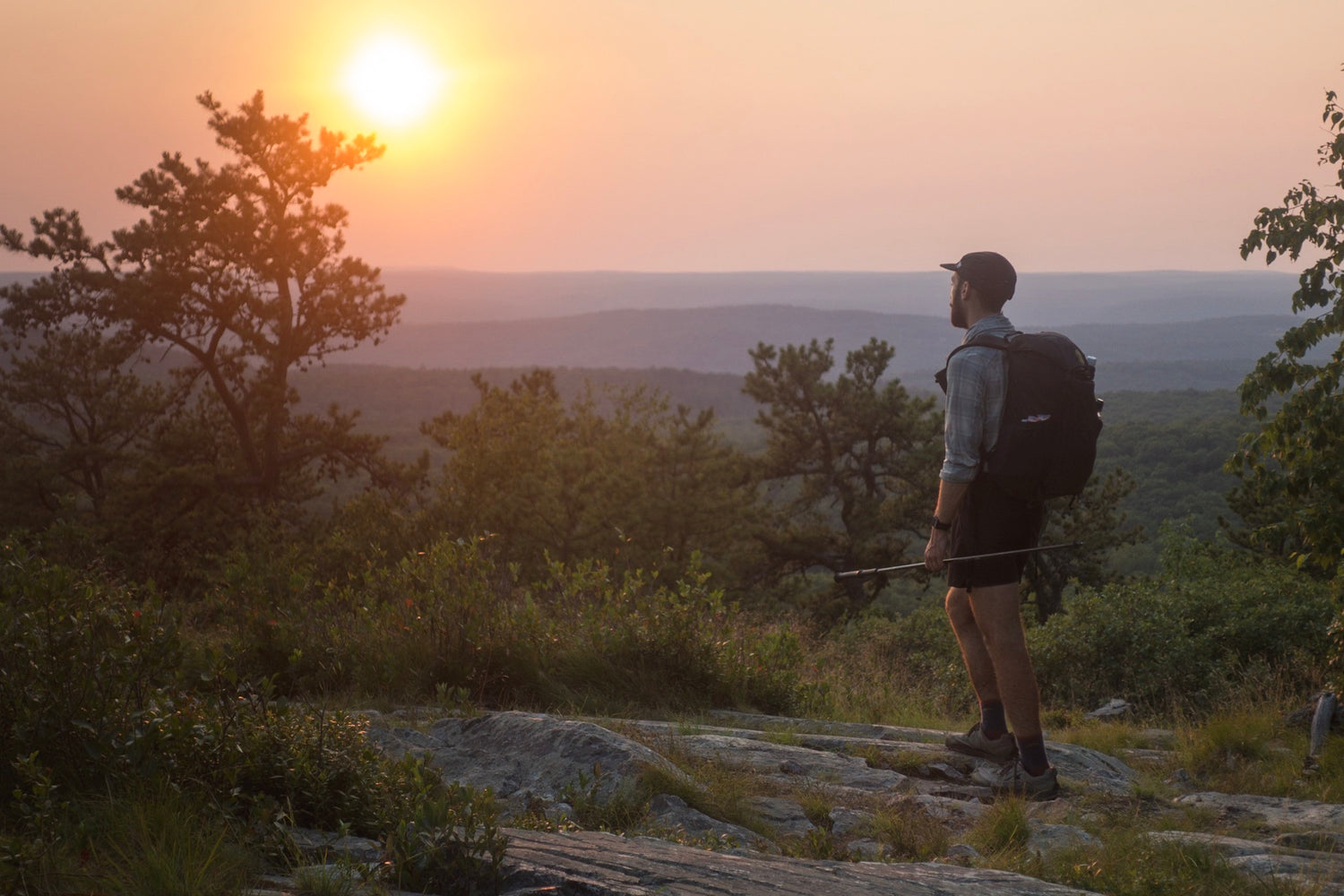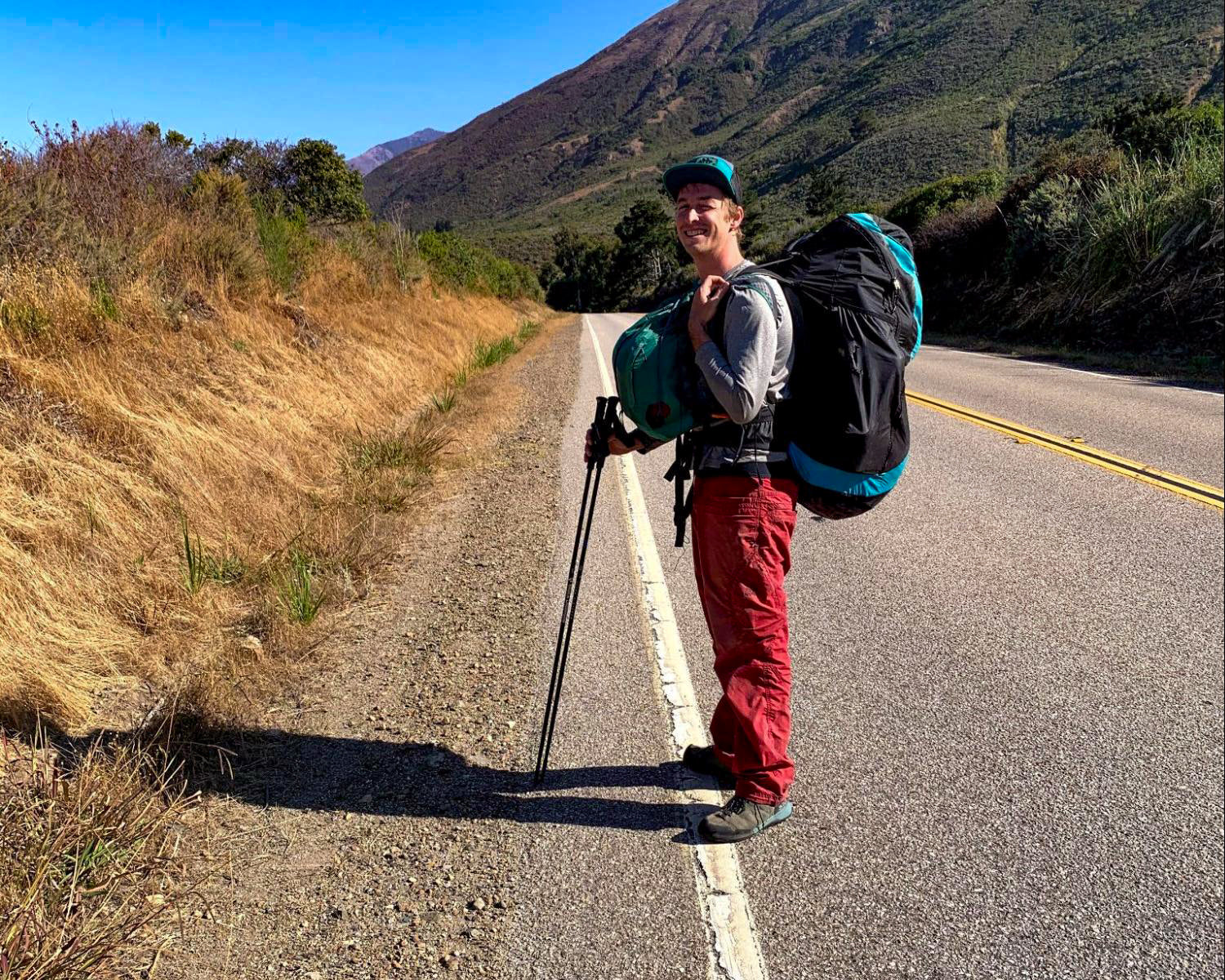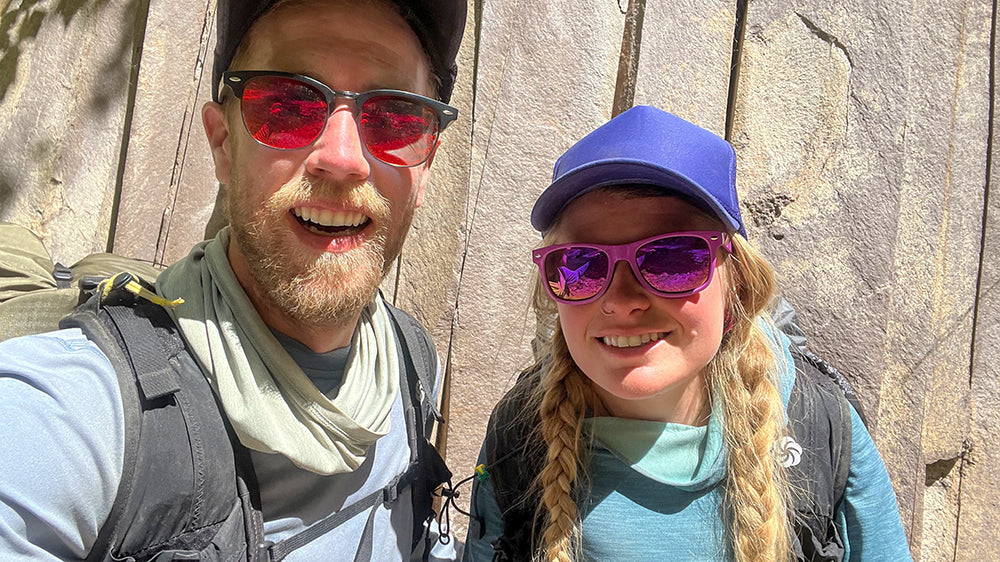By James Lamers
In the spring of 2021, in the middle of a pandemic that had driven me and the rest of the world half crazy, I found myself in Amicalola Falls State Park in Georgia ready to walk north with over 2000 miles of the Appalachian Trail (AT) ahead of me. For the second time in my life, I planned to walk across the United States carrying everything I needed to brace the elements and sleep in the great outdoors on my back.
87 days later, on a perfect afternoon in mid-August, I summited Mount Katahdin and finished my journey with a heart overflowing with the joy and hardships I had accumulated over the course of walking through 14 states. I had never been more tired in my life, but I was elated with the satisfaction of my own accomplishment.
Along the way, I learned a few lessons that I’m happy to share in this post.
Beauty Can be Subtle
Up until arriving in the Appalachians, all my backpacking had been in epic places like the Sierra, North Cascades, the Patagonian Andes, and the Himalaya. My trips so far had been filled with clear skies, wide-open mountain ridgelines, and glacier-capped peaks. Beauty on that scale isn’t hard to appreciate. It turns out that I would find plenty of beauty to marvel at in the AT, but it would be subtler than what backpackers find in the Mountain West of America, or the other famous ranges of the world.

A trillium bloom in Georgia
Although the AT has a few marvelous mountain vistas of its own, the things that captivated me most were on a smaller scale. I fell in love with the blooms of Southern Appalachia in the spring: trillium, azaleas, mountain laurel, and rhododendrons were my favourite. In the mid-Atlantic, the sun rays shining through the tree canopy to burn off morning fog were enough to stop me in my tracks. And in northern Maine, a single loon silhouetted against the orange glow of sunset over a lake could make me feel at peace no matter how hard the day had been.

Mountain laurel lining the AT in North Carolina
Since coming home from the AT, I’ve found that I’ve been able to integrate that appreciation for subtler beauty into my everyday life, and find more of it around me than I had before the thru hike. In the past, I might have needed to hike to the top of one of the local peaks to get my fix of nature time. But now, I find that admiring the trees in my neighbourhood park can sometimes be enough. I appreciate how special it is when the street trees on my block are in bloom for a couple weeks in the spring. Even just a few deep breaths while standing on the shore of the local creek can ease all the tension from a long work day.
Accomplishment is more Memorable than Discomfort
There’s no two ways about it: the conditions on the AT are tough. The rocky trails of Pennsylvania made my sore feet cry out for mercy, swarms of angry mosquitos chased my itchy self all the way across Massachusetts, and I got dressed in soaking-wet clothes every morning for weeks in a row as incessant rain pounded Vermont and New Hampshire.
I remember that those things happened to me, but the truth is that I can’t really remember how bad they felt, and they don’t upset me anymore. None of the discomfort that I went through on a daily basis on the AT affects me now that I’m off the trail. What lasts are the great memories I shared with the hikers and locals I met along the way, the awe I felt at the natural beauty around me, and the sense of accomplishment I found in working through the adversity I experienced.

Making the best of a rainy day in Great Smoky Mountains National Park
I think what I learned about discomfort on the AT is generalizable to a lot of areas in life like school, careers, and our personal lives. Persevering through some tough hours, days, or even weeks is really not so bad at the end of the day if it means accomplishing the things that are important to us, because the discomfort is completely forgettable.
You Would be Surprised at How Strong You Are
AKA Make sure to pack enough food
On a sunny afternoon in Norwich, Vermont, I sat on the pavement of the local post office and packed most of the food I would eat through the length of the AT in New Hampshire and Maine into medium flat-rate boxes. I did so in a bit of a hurry and made the mistake of packing too little food in my boxes.

We have the strength to push ourselves from our lowest point to triumphant highs.
I realized this the hard way when I found myself with about 30 miles of walking to go to my next box in Rangeley, Maine with no food left in my pack. I was tired, underfed, and my mood was low, but my best option was to keep pushing forward and get to the next town, fueled by nothing but instant coffee, hopes and dreams, and whatever I could forage along the way.
In the end, I made it to town, helped by some clutch wild blueberries and raspberries lining the trail. It was a tough challenge to overcome, given how hungry I was. I’ve of course learned the practical lesson of packing a better resupply, which I’ll do on future hikes. But I also learned just how much my mind and body could do when I really needed them to. I wouldn’t go around having these types of experiences on purpose too often, but I guess they’re when we learn what we’re really made of, and one of the reasons we leave the comforts of home in the first place.

One way to pack some extra food.
I think that we all have the potential to surprise ourselves with how strong we are. Much like the way I walked up and down the mountains of Maine on an empty stomach, there’s something in us that can get us through obstacles we may have thought were insurmountable, as long as we have the drive to get push when things get tough.
Conclusion

In addition to the things I wrote about here, I also learned a bunch of practical lessons on the AT, like how to find a dry campsite on a rainy evening, how to sleep comfortably on ⅛ inches of foam, or how to rehydrate and eat instant ramen without stopping from walking. But those are things that you can learn from an online video that others have covered better than I could. But I really think I needed to walk from Georgia to Maine to appreciate the subtle beauty around me, stop avoiding discomfort, and surprise myself with my strength, and I hope this post can help you find some of that in yourself to help with your own adventures in life.
About the Author

James is a long-distance backpacker and runner based in Vancouver, British Columbia travelling around the world in search of beautiful landscapes and challenging adventures on foot. Sharing his experiences through writing and photography is what inspires him to get out there.
On his journeys, James likes to move fast and efficiently through the mountains with minimal gear. He pushes big miles over long days, but will never pass up an opportunity for a good photo, and will never miss a night of journaling in his shelter. Sharing the magic of a thru-hike with the people at home is one of the things that make a trip so special.
In 2019, James completed a thru-hike of the Pacific Crest Trail through a record-breaking California snowpack in 100 days, and in 2021 completed a thru-hike of the Appalachian Trail in 87 days, battling the non-stop rain of Hurricane Elsa through New England. He has also completed thru-hikes of the West Coast Trail, John Muir Trail, Wonderland Trail, Torres del Paine O Circuit, and Annapurna Circuit.











Leave a comment
This site is protected by hCaptcha and the hCaptcha Privacy Policy and Terms of Service apply.